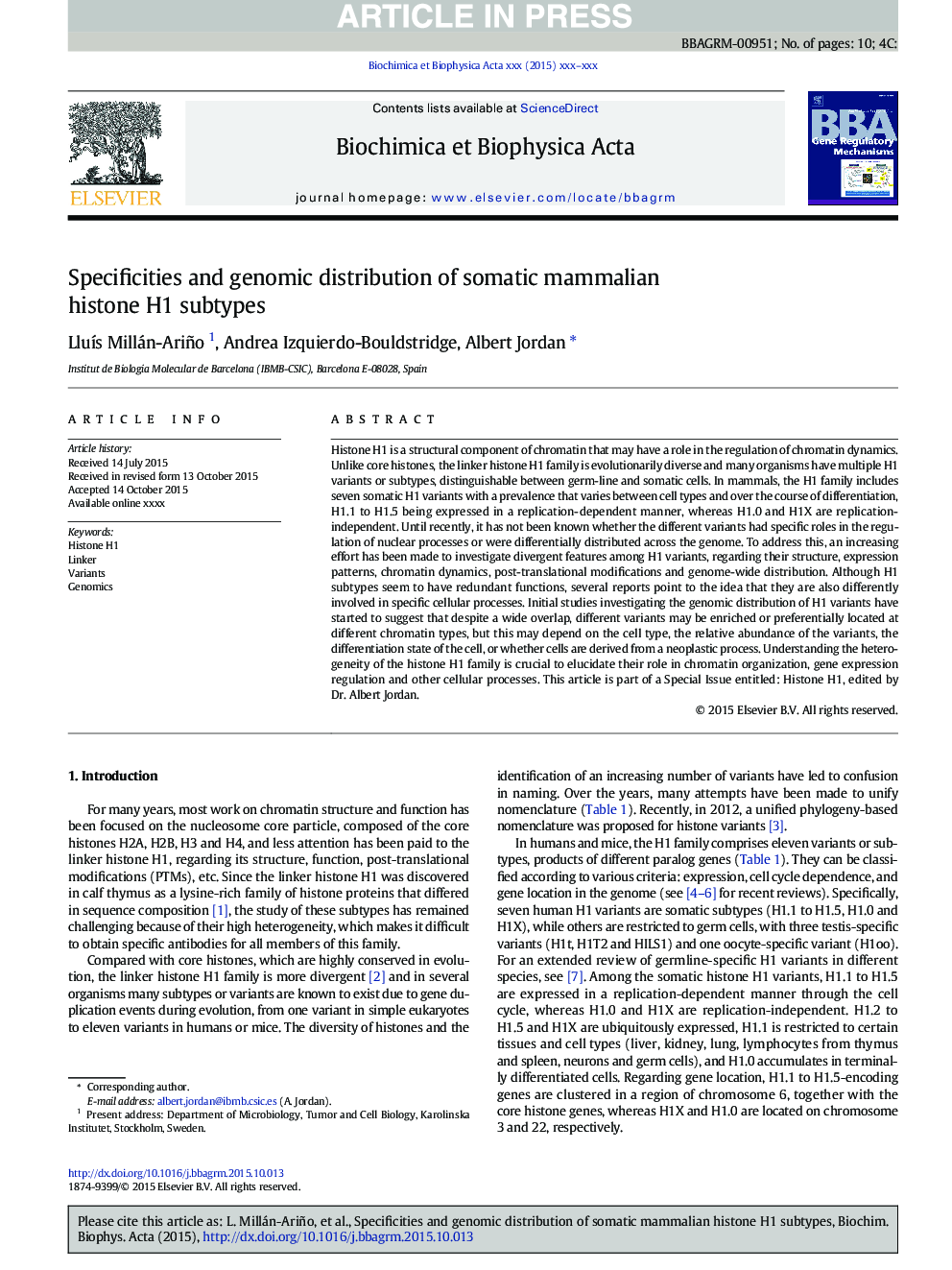| Article ID | Journal | Published Year | Pages | File Type |
|---|---|---|---|---|
| 10798926 | Biochimica et Biophysica Acta (BBA) - Gene Regulatory Mechanisms | 2016 | 10 Pages |
Abstract
Histone H1 is a structural component of chromatin that may have a role in the regulation of chromatin dynamics. Unlike core histones, the linker histone H1 family is evolutionarily diverse and many organisms have multiple H1 variants or subtypes, distinguishable between germ-line and somatic cells. In mammals, the H1 family includes seven somatic H1 variants with a prevalence that varies between cell types and over the course of differentiation, H1.1 to H1.5 being expressed in a replication-dependent manner, whereas H1.0 and H1X are replication-independent. Until recently, it has not been known whether the different variants had specific roles in the regulation of nuclear processes or were differentially distributed across the genome. To address this, an increasing effort has been made to investigate divergent features among H1 variants, regarding their structure, expression patterns, chromatin dynamics, post-translational modifications and genome-wide distribution. Although H1 subtypes seem to have redundant functions, several reports point to the idea that they are also differently involved in specific cellular processes. Initial studies investigating the genomic distribution of H1 variants have started to suggest that despite a wide overlap, different variants may be enriched or preferentially located at different chromatin types, but this may depend on the cell type, the relative abundance of the variants, the differentiation state of the cell, or whether cells are derived from a neoplastic process. Understanding the heterogeneity of the histone H1 family is crucial to elucidate their role in chromatin organization, gene expression regulation and other cellular processes. This article is part of a Special Issue entitled: Histone H1, edited by Dr. Albert Jordan.
Keywords
Related Topics
Life Sciences
Biochemistry, Genetics and Molecular Biology
Biochemistry
Authors
LluÃs Millán-Ariño, Andrea Izquierdo-Bouldstridge, Albert Jordan,
